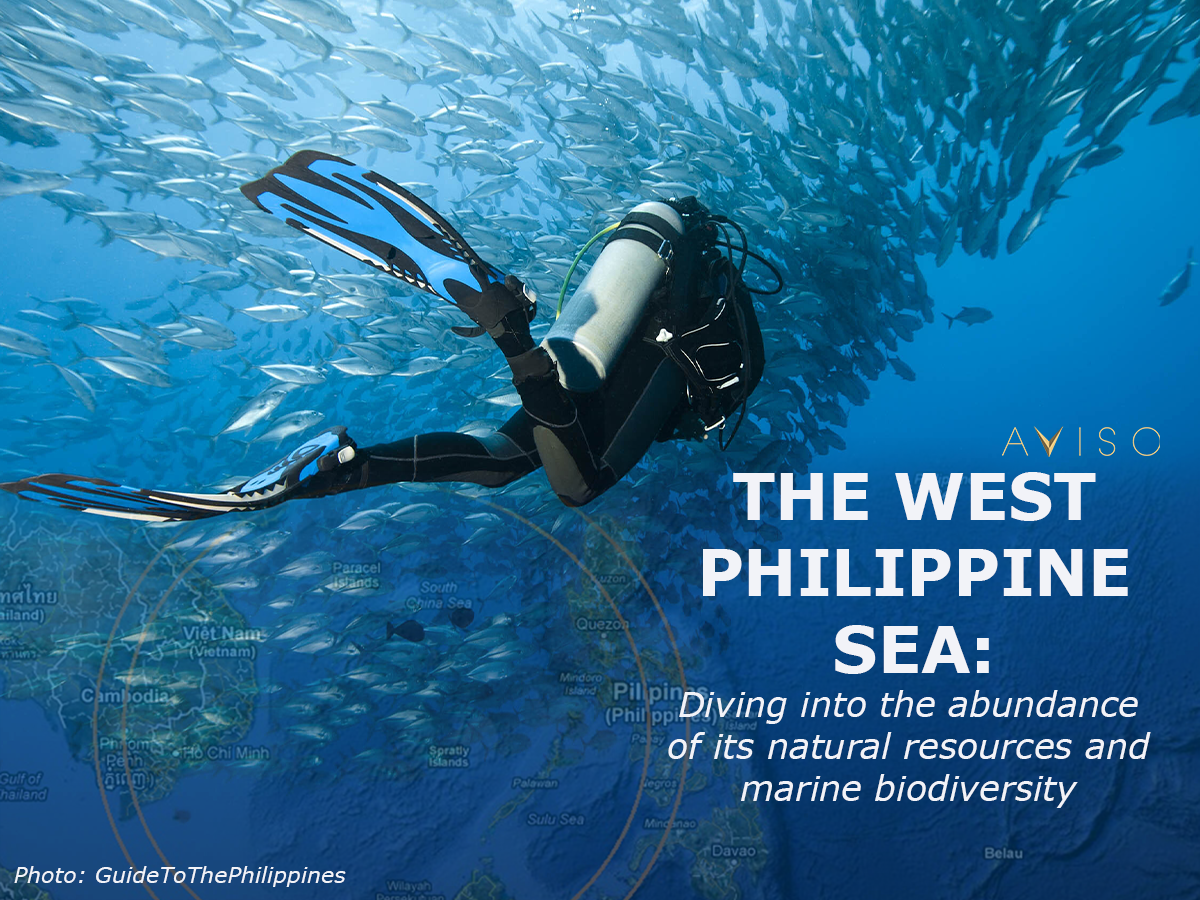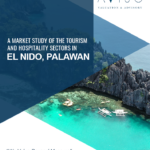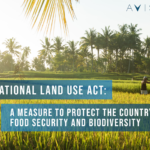
The issue in the West Philippine Sea has recently resurfaced as a result of China’s aggressive action in the area, which has alarmed local authorities. On March 21, the Philippine Coast Guard and the National Task Force on the West Philippine Sea (NTF-WPS) reported about 220 Chinese ships spotted in line formation near the Julian Felipe Reef. The Department of Foreign Affairs took the initiative to submit a diplomatic protest, demanding that China should “immediately withdraw” its vessels from the country’s Exclusive Economic Zone (EEZ). At the same time, the Armed Forces of the Philippines deployed additional naval units in the area. But despite warnings and protests, the NTF-WPS reported on April 13 that Chinese Maritime Militia ships were still spotted at the Julian Felipe Reef.

Chinese vessels spotted in a line formation near the Julian Felipe Reef
Photo from Philippine Daily Inquirer
In light of the recent news, it becomes essential to know what is the West Philippine Sea and why China is claiming it. Why is it necessary to defend and preserve the Philippines’ rights within its Exclusive Economic Zone (EEZ)?
What is the West Philippine Sea?
The West Philippine Sea (WPS) is part of the west side of Philippine territory and lies within the South China Sea. The WPS, which includes Panatag (Scarborough) Shoal, Kalayaan Island Group, and portions of the Spratly Islands, is part of the Philippines’ Exclusive Economic Zone (EEZ).
In 1982, the conflicting maritime claims in the South China Sea were regulated by the United Nations Convention on the Law of the Sea (UNCLOS), which entered into effect in 1994. UNCLOS is the Constitution for the world’s oceans and seas and has been ratified by those claimant states in the South China Sea dispute.
Under UNCLOS, every coastal state has a 200-nautical-mile EEZ, plus an additional 150-nautical-mile extended continental shelf (ECS) where applicable, drawn from baselines on continental land or islands. In place of the additional 150-nm ECS, a coastal state may use an ECS of up to 100-nm seaward from the 2,500-meter isobath. In 2009, the Philippines amended its baselines law which defines the country’s territory following the rules and deadlines set by the UNCLOS.
However, China did not recognize the agreement under the UNCLOS. China claims “indisputable sovereignty” over all the waters, islands, reefs, rocks, seabed, minerals, living and non-living resources falling within its nine-dash line claim in the South China Sea.

Dispute claims in the South China Sea
Source: Center for Strategic and International Studies, Permanent Court of Arbitration
The nine-dash line area comprises almost 90% of the total area of the South China Sea. It encompasses 80% of the West Philippines’ Exclusive Economic Zone, including Recto Bank and part of the Malampaya gas field. China also encroached 100% of the West Philippine Sea 150-nm extended continental shelf (ECS). Regarding the size of the area infringed by China’s 9-dashed line claim, the Philippines, Vietnam, Malaysia, Brunei, and Indonesia are the countries most adversely affected.
How rich is the West Philippine Sea in terms of Natural Resources?
Fisheries
The Philippine Sea is known as a hotspot and a center of marine biodiversity. The South China Sea, including the West Philippine Sea, accounts for 12% of the world’s annual fish catch, worth $21 billion. In his 2014 book Asia’s Cauldron, geopolitical analyst Robert D. Kaplan said that fish stocks in the WPS could account for a tenth of global landed catch.
The Kalayaan Islands and the west area of Palawan account for about 10% of the Philippines’ Exclusive Economic Zone (EEZ), contributing approximately 20% of the country’s total marine fish catch each year. Its annual fish yield is estimated to be 5 million tons, supporting thousands of Filipino fishermen’s everyday living and livelihood. It is also home to vast coral reefs that serve as spawning grounds for popular seafood such as tuna, galunggong, and danggit.
The Kalayaan Islands area holds the key to the long-term sustainability of the Philippines’ marine resources. Migratory species of fish, sharks, whales and other creatures travel throughout the region by riding the waves and currents between the West Philippine Sea, the Gulf of Thailand, and the Pacific Ocean.
Coral Reefs
The area is also rich in biological resources. Its coral reefs span an area almost as large as Mindanao and account for 30% of the nation’s total coral reefs. Scientists have discovered hundreds of fish, coral, seagrass, and other marine life in the West Philippine Sea.
Its marine biodiversity is among the highest in the world. It can be a significant source of natural pharmaceuticals that are safer and more effective than those currently in use. It can also produce natural compounds to produce environmentally friendly products such as organic pesticides, cosmetics, and nutritional supplements.
Oil and Gas
According to the Liquefied Petroleum Gas Marketers’ Association (LPG-MA), the WPS is vastly rich in oil and natural gas, which can supply power to the grids of Luzon, Visayas, and Mindanao for at least 20 years.
Based on geological surveys, the US Energy Information Administration estimates that the WPS may contain up to 55.1 trillion cubic feet of natural gas and 5.4 billion barrels of oil, with most of the resources likely located in the contested Reed Bank at the northeast end of the Spratlys.
In his e-book, Justice Antonio Carpio adds the West Philippine Sea is potentially rich in methane hydrates — said to be one of the fuels of the future, which can fuel an economy as large as that of China for 130 years.
That means, if the Philippines generates natural gas from the WPS, we will finally solve the decade-long problem with electricity. Since the electricity would be cheaper, households and businesses will save a significant amount of money. As a result, more business opportunities and investment will be drawn to the Philippines, causing a tremendous change in the Philippine economy.
The Philippines has barely measured the total wealth that it has, not only in terms of buildings, roads, or machinery but also in natural resources such as land, oil, minerals, and marine resources. Therefore as a developing country, it must secure as many resources as possible, particularly in resource-rich areas like the West Philippine Sea, which lies well within its exclusive economic zone. With the natural resources that the West Philippine Sea possesses, it will undoubtedly play a significant role in boosting the Philippine economy.
Written By: Mary Grace Ladringan and Angelo Gandia
Aviso Valuation and Advisory Corp. is a real estate consultancy firm that offers valuation and business advisory services compliant to international standards such as the International Valuation Standards (IVS) and International Financial Reporting Standards (IFRS). To assure that we only produce high-quality deliverables, as needed, we do tasks beyond the usual appraisal process like verifying pertinent property documents (i.e. land titles, tax declarations, etc.) with the appropriate government agencies for due diligence purposes prior to the acquisition of the properties.
References:
https://globalnation.inquirer.net/194406/over-200-chinese-vessels-moored-at-west-philippine-sea-reef
https://www.rappler.com/voices/thought-leaders/opinion-law-justice-west-philippine-sea
https://www.rappler.com/nation/chinese-ships-remain-philippine-reefs-march-29-2021
https://www.imoa.ph/speech-the-rule-of-law-in-the-west-philippine-sea-dispute/
https://www.manilatimes.net/2015/08/09/news/top-stories/gas-in-wps-can-energize-entire-ph/207961/
https://www.rappler.com/voices/thought-leaders/analysis-just-how-valuable-is-west-philippine-sea









